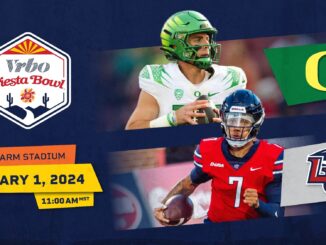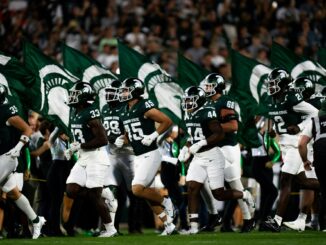
College football is gearing towards crowning the latest champion this year, 2020. However, the game is clouded by major hurdles and is yet to establish why the crowds at the stadiums are tanking.
In 22 years, as revealed by CBS Sports, college football attendance has shrunk by a large margin, about 7.6 percent. In the last season, according to the numbers released, the average attendance registered 41,856 in all the 129 FBS programs. This is the lowest number recorded since 1996.
Attendance
In 2017, there were 30 top programs. 20 of them did not experience any change, while the rest recorded a continuous drop in the following year, 2018. Florida, South Carolina, and Two SEC schools are among the programs most affected.
NCAA confirmed that even the national champion, Clemson, crowned in the last season, had about 370 fans per game. In 2019, pictures posted on Twitter exposed nearly empty stadiums in both small and large programs. With stands so empty, athletic directors now agree that college soccer is in crisis.
Equally, college soccer is not the only one in troubled times. Other major sports, such as Baseball, are facing the same problems. For instance, League Baseball has seen a decline of 7.1 percent in terms of attendance since 2015.
The NFL in early January 2020 announced to have recorded the lowest turnout numbers since 2004. This, however, has not discouraged students from applying for Tuition Games.
NHL, on the other hand, recently experienced a 0.7 percent decline in its latest game, one of its lowest from 2013/14. NBA, however, reported a rise in attendance since its 2011/12 lockout season. In 2018, independent statistics showed that only about 71 percent of those who had bought college football tickets attended the live games.
Off-Stadium Fan-Base
In the previous year, Iowa altered its school by approximately $1 million resulting from low ticket sales. In the rest of the country, schools in Tennessee and LSU took to alcohol sales to try and increase the revenue and attract more fans.
In Alabama, students who stayed longer at the stadium were rewarded with better odds to snag playoff tickets. In Florida, DJs and better food trucks were provided slightly before the start of the game.
Some analysts blame the low attendance on technology, citing that youngest people prefer following a live game from home. The pews may be emptying, but the fan base is bigger than it has ever been. Perhaps the question to ask is, why do people choose to skip games in person?
The reasons are endless. There is the time commitment to consider and perhaps the monetary obligation. Tickets are also considered expensive, and there is also the traffic factor in the equation. What’s more, most games tend to take longer than expected, thus the need for organizers to gather many commercials.
Technology has a bigger part to play. A Gallup poll in 2018 showed that US residents were focused on college football, close to the same level as the NFL. In the past years, TV ratings had declined, but are now on the rise.
With the rise of e-sports, Americans watch live games; they just don’t show up at the stadiums. Even with the shifts occurring in arenas, there is a high demand for sports content in the media. It is viewed as the best approach to reaching mass audiences.
The Solution
With most fans preferring to watch a live game on TV, perhaps the most outstanding solution would be to market your team. Driving more people towards watching the game could be the best way to make college sports survive. It is possible to get people from far and wide to follow a live game like the cases of La Liga and the English Premier League, among others.
For a college game, the connection needs to be personal to maintain casual and occasional viewership. The real challenge may be experienced by smaller colleges and universities, given that the mid-market may be a tougher sell. It means the marketing will need to be aggressive to fill the seats and heighten the incremental revenue.
In the present decade, the focus will be on how the sports industry can adapt to legalized gaming. The in-stadium wagering will also be a point of concern. There are many elements to be worked on to make America evolve to in-stadium wagering.
Should the stadium become a focal point for gaming, whereby certain gambling advantages are only offered within the live sporting venue, more attendance in arenas could be noted. In the near future, college games could experience wagering on players and their stats or plays. With proper marketing, this could be a lucrative industry for the US sports entities.
Until schools make it a priority to giving better experience at the stadium more than TV, the trend of declining attendance may continue to be reported. Football programs must focus more on offering fan connectivity and shareability.



